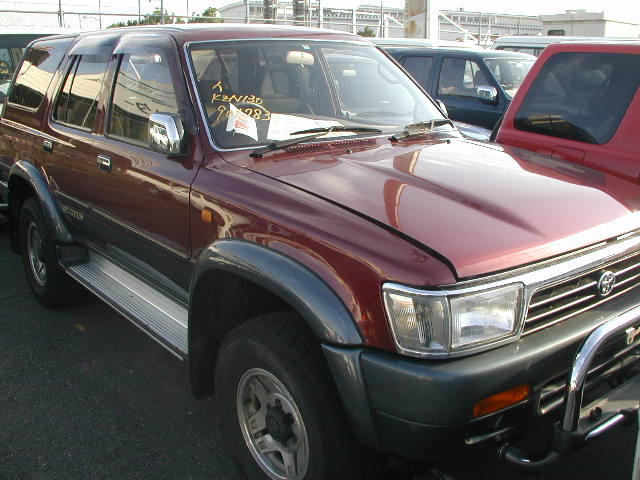
The Toyota Hilux is a series of compact pickup trucks produced and marketed by the Toyota Motor Corporation. Most countries used the Hilux name for the entire life of the series but in North America, the Hilux name was retired in 1976 in favor of Truck, Pickup Truck, or Compact Truck.

In North America the popular option package, the SR5 (Sport Rally 5-Speed), also became synonymous with the truck, even though the option package was also used on other Toyota models as well. In 1984, the Trekker, the camper version of the Hilux, was renamed as the 4Runner in Australia and North America, and as the Hilux Surf in Japan. In 1995, Toyota introduced a new pickup model, the Tacoma in the United States, discontinuing the Hilux/Pickup there. The 4Runner is now a full SUV, and the more recent models do not resemble the Tacoma.

This was further reinforced on the BBC motoring show Top Gear, when a 1988 Hilux with 190,000 miles (308,000 km) on the odometer was subjected to extraordinary abuse (in series 3, episodes 5 and 6). This consisted of driving it down a flight of steps, scraping buildings, crashing headlong into a tree, being washed out to sea, and being submerged for four hours, driving it through a garden shed, dropping a caravan onto it, hitting it with a wrecking ball, setting its cabin and bed area on fire,[8] and, finally, placing it on top of a 240-foot (73 m) block of apartments that was next destroyed by a controlled demolition.[9] Although it was now suffering from severe structural damage, the truck was still running after being repaired without spare parts, and with only the typical tools, etc. that would be found in a truck's toolbox, such as screwdrivers, motor oil, and an adjustable wrench,[10] however WD40 was used to get the engine going after it had been recovered from the sea. The Hilux currently rests as one of the background decorations in the Top Gear studio.

The redesigned Hilux was introduced in August 1978.,[1] with a 4WD variant introduced in Jan 1979.[1] Production of 4WD variants stopped in July 1983,[1] but some 2WD variations continued in parallel with the next generation.[1] The L series diesel engine was offered on the 2WD variants from September 1979 and the 4WD variants in March 1983.

In 1981 a vehicle development agreement was established between Toyota, Winnebago Industries and two other aftermarket customizers. This was to allow Toyota to enter the SUV market in North America.
.jpg)
The Hilux (fifth generation) in South America was produced in Colombia from 1994 through 1998 by the SOFASA company (only the petrol engine 2.4 l), for sales in Colombia, Venezuela. and Ecuador). For sales in Argentina, Brazil, and Uruguay, the Hilux was produced in Argentina from 1997 through 2005 (Zárate Plant - both petrol and diesel engines). For sales in Bolivia, Chile, Paraguay, Peru, the Hilux was imported from factories in Japan from 1989 through 1997 (petrol and diesel engines). South American 7-G Versions:

Both the Tacoma and the Hilux were updated in 2005. The Tacoma was based on the new 4Runner chassis, while the Hilux rides on a refreshed version of the ladder frame found on previous versions. The new Hilux has increased in size and is now classified as a mid-size pick up. The Tacoma had a new 4.0 liter V6 engine that produces 236 horsepower (176 kW) and 266 ft·lbf (361 N·m) torque. Its design was very similar to the 4Runner.

A facelifted version of the Hilux was unveiled by Toyota's Malaysian distributors, UMW Toyota Motor, in August 2008. Toyota has released a Left Hand Drive facelifted Hilux Vigo in August 2008 while a Right Hand Drive facelifted model is expected to be released in September 2008.[7] These facelifted models were introduced to the Philippines in October 2008.
A world record was achieved by the support crew for the participants in the 2008/2009 Amundsen Omega 3 South Pole Race. The crew travelled in specially adapted Toyota Hiluxs modified by Arctic Trucks, completing a trip of over 5000 km from Novo, a Russian Scientific Station in Antarctica to the Geographic South Pole and back again, making them the first 4x4s to reach the South Pole. The return journey of 2500 km from the South Pole to Novo Station was completed in a record 8 days and 17 hours.

No comments:
Post a Comment